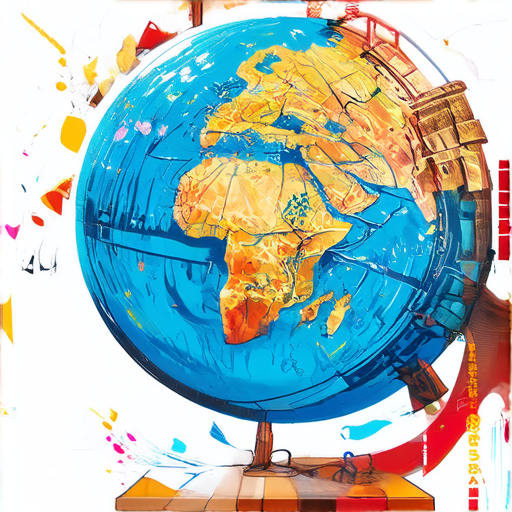As travelers, we often find ourselves drawn to unfamiliar lands and cultures, eager to immerse ourselves in the rich tapestry of human experience that awaits us abroad. Yet, amidst the thrill of discovery, it’s easy to overlook the profound significance of cultural diversity in our travels – a concept that encompasses not just the visible manifestations of difference, but also the intricate web of customs, traditions, and values that underpin the lives of people from diverse backgrounds.

Why Cultural Diversity is Important in Tourism
Cultural diversity plays a vital role in shaping the tourism industry, offering travelers unique experiences and opportunities to engage with local communities.
-
Breaking Down Barriers
Culturally diverse teams can provide a higher level of service to guests, whether it’s by speaking different languages, adapting services and products to meet specific needs, or understanding cultural sensitivities in a way homogeneous teams cannot.
-
Fostering Cross-Cultural Understanding
Tourism provides a platform for people from diverse backgrounds to come together, share their customs, traditions, and values, promoting cross-cultural understanding and exchange.
-
Supporting Local Communities
Cultural diversity in tourism helps support local communities by preserving traditional practices, promoting indigenous cultures, and generating income through sustainable tourism initiatives.
-
Enhancing the Travel Experience
Culturally rich destinations offer travelers a chance to immerse themselves in local customs, try authentic cuisine, and participate in traditional festivals and events, making their travel experience more memorable and enriching.
In today’s interconnected world, cultural diversity is essential for the success of the tourism industry, allowing businesses to tap into the growing demand for immersive and culturally significant travel experiences.
As a traveler, embracing cultural diversity can lead to a deeper appreciation of local customs, traditions, and ways of life, fostering meaningful connections with the people you meet along the way.
By prioritizing cultural diversity, we can create a more inclusive and vibrant tourism industry that benefits both locals and visitors alike.
Understanding Cultural Differences When We Travel
As I reflect on my own travels, I realize how crucial it is to grasp cultural nuances when exploring unfamiliar lands.
- Cultural immersion allows us to develop a deeper comprehension of diverse customs, traditions, and values.
- This newfound understanding fosters empathy and encourages us to challenge our own biases and stereotypes.
- By embracing cultural differences, we can break down barriers and establish meaningful connections with locals.
The Importance of Cultural Awareness
Cultural awareness is essential for navigating unfamiliar environments effectively.
- It enables us to respect local customs and traditions, avoiding unintentionally offending others.
- Cultural knowledge helps us appreciate the unique history and heritage of a place, enriching our travel experiences.
- By being mindful of cultural differences, we can engage in respectful interactions with locals, promoting cross-cultural understanding and exchange.
Practical Tips for Cultivating Cultural Awareness
To foster a deeper understanding of cultural differences during travel, consider the following:
- Research local customs and traditions before arriving at your destination.
- Engage with locals through language classes, homestays, or community-based projects.
- Be open-minded and receptive to new experiences, even if they challenge your own perspectives.
Embracing Diversity Through Travel
Travel offers a unique opportunity to immerse ourselves in diverse cultures and broaden our perspectives.
- By embracing cultural differences, we can develop a more nuanced understanding of the world and its complexities.
- Cultural immersion encourages us to think critically about our own assumptions and biases.
- Through travel, we can cultivate empathy and compassion, breaking down cultural barriers and fostering global understanding.
Navigating Cultural Differences with Confidence
With practice and patience, we can become more confident in navigating cultural differences during travel.
- We can develop a greater appreciation for the diversity of human experiences and perspectives.
- Cultural awareness empowers us to engage in respectful and meaningful interactions with locals.
- By embracing cultural differences, we can create lasting connections and memories that transcend borders and cultures.

Exposing Yourself to Different Cultures Through Travel
As I embark on my travels, I’m constantly reminded of the profound impact that immersing myself in foreign cultures has on my perspective and worldview.
- Learning About Local Customs: Before arriving in a new destination, I take the time to research local customs, traditions, and etiquette to avoid unintentionally offending anyone.
- Interacting with Locals: Engaging with locals through conversations, homestays, or volunteering opportunities allows me to gain a deeper understanding of their daily lives and challenges.
- Tasting Local Cuisine: Sampling local delicacies and drinks not only satisfies my taste buds but also provides insight into the region’s history, geography, and cultural influences.
- Attending Local Festivals and Events: Participating in local celebrations and festivities offers a unique glimpse into the community’s values, beliefs, and sense of humor.
- Visiting Museums and Historical Sites: Exploring museums and historical landmarks helps me appreciate the region’s rich heritage and understand the complexities of its past.
- Staying with Locals: Living with host families or staying in locally-owned accommodations enables me to experience everyday life firsthand and develop meaningful connections with my hosts.
Through these experiences, I’ve come to realize that traveling exposes me to diverse perspectives, fosters empathy, and broadens my understanding of the world.
Some of my favorite destinations for cultural immersion include Japan, Morocco, and India, which offer a wealth of opportunities to engage with local communities and learn about their customs and traditions.
For those looking to deepen their cultural understanding, I recommend exploring online resources, such as Culture IQ and World Nomads, which provide valuable insights and practical advice for navigating unfamiliar environments.
Ultimately, traveling is a powerful tool for cultural exchange and growth, allowing us to challenge our assumptions, develop new skills, and forge lasting connections with people from around the globe.
Cultural Immersion Tips:
- Research local customs and traditions before arrival.
- Engage with locals through conversations, homestays, or volunteering opportunities.
- SAMPLE local cuisine and drinks to gain insight into regional history and culture.
- Attend local festivals and events to experience community values and traditions.
- Visit museums and historical sites to appreciate regional heritage and complexity.
- Stay with locals to experience everyday life and develop meaningful connections.
Recommended Destinations for Cultural Immersion:
- Japan: Known for its vibrant cities, stunning landscapes, and rich cultural heritage.
- Morocco: Offers a unique blend of African, Arab, and European influences, with a rich history and warm hospitality.
- India: A kaleidoscope of cultures, cuisines, and landscapes, with a deep spiritual heritage and vibrant cities.

Cultural Diversity
Cultural diversity encompasses various aspects of human identity, including language, religion, race, sexual orientation, gender, age, and ethnicity.
-
Language:
Language is a fundamental aspect of cultural diversity, reflecting the unique experiences, traditions, and values of different communities.
- Examples of languages spoken worldwide include Mandarin Chinese, Spanish, Arabic, Hindi, and English.
- Linguistic diversity enriches our understanding of cultures and fosters communication among people from diverse backgrounds.
-
Religion:
Religion plays a significant role in shaping cultural identities and influencing individual beliefs and practices.
- Major world religions include Christianity, Islam, Hinduism, Buddhism, and Judaism.
- Each religion has its own distinct traditions, rituals, and values that contribute to cultural diversity.
-
Race and Ethnicity:
Race and ethnicity refer to the physical characteristics and cultural affiliations that distinguish individuals and groups.
- Examples of racial and ethnic categories include African American, Asian, Caucasian, Hispanic, and Indigenous.
- Racial and ethnic diversity promotes cross-cultural understanding and appreciation, breaking down stereotypes and prejudices.
In today’s interconnected world, embracing cultural diversity is essential for building inclusive communities, fostering creativity, and driving economic growth.
By recognizing and celebrating our differences, we can work towards a more harmonious and equitable society that values the contributions of all individuals and groups.
Cultural Diversity Issues
-
Lack of Representation
I believe that there is often a lack of representation in media and popular culture, which can lead to a lack of understanding and appreciation for diverse cultures.
- For example, people from underrepresented groups may see themselves reflected in few characters or storylines, making it difficult for them to feel seen and heard.
- This can perpetuate stereotypes and reinforce negative attitudes towards certain cultures.
-
Cultural Appropriation
Cultural appropriation occurs when aspects of a culture are taken and used by someone from a different culture without permission or understanding.
- This can be hurtful and damaging to the original culture, as it reduces complex traditions and customs to mere fashion accessories or novelty items.
- It’s essential to approach cultural exchange with respect and sensitivity, recognizing the power dynamics involved.
-
Language Barriers
Language barriers can create significant challenges for individuals who speak little or no English, making it difficult for them to access services, education, and employment opportunities.
- Language classes and translation services can help bridge this gap, but more needs to be done to support language learners and promote linguistic diversity.
- By acknowledging and addressing language barriers, we can work towards creating a more inclusive and equitable society.

Cultural Diversity in the United States
The United States is a melting pot of cultures, with people from diverse backgrounds living together and contributing to its rich heritage.
- Korean food has gained immense popularity in recent years, with many restaurants serving traditional dishes like bibimbap and bulgogi.
- Chinese food is another staple in American cuisine, with popular dishes like General Tso’s chicken and lo mein.
- Tex-Mex cuisine combines Mexican and American flavors, featuring dishes like tacos and burritos.
- Louisiana Creole culture is a unique blend of French, English, Spanish, African, and Native American influences, reflected in its music, language, and cuisine.
Examples of Cultural Diversity in the US
- New Orleans Jazz Festival: Celebrating the city’s rich musical heritage, the festival features performances by local and international artists.
- Houston Livestock Show and Rodeo: Showcasing Texas’s cowboy culture, the event attracts visitors from around the world.
- Mardi Gras in New Orleans: A vibrant celebration of French and African influences, Mardi Gras parades and parties take place throughout the city.
- Native American Powwows: Honoring indigenous cultures, powwows feature traditional music, dance, and art.
Importance of Cultural Diversity in the US
Cultural diversity enriches American society, fostering creativity, innovation, and understanding among communities.
- Economic Benefits: Cultural events and festivals attract tourists, boosting local economies.
- Social Benefits: Cultural exchange promotes empathy and tolerance, breaking down social barriers.
- Creative Expression: Diverse cultures inspire artistic expression, from music and dance to visual arts and literature.
Conclusion
The United States is a vibrant tapestry of cultures, reflecting the country’s history, values, and aspirations.
By embracing and celebrating our differences, we can build a stronger, more inclusive society that honors the contributions of all individuals.




0 Comments